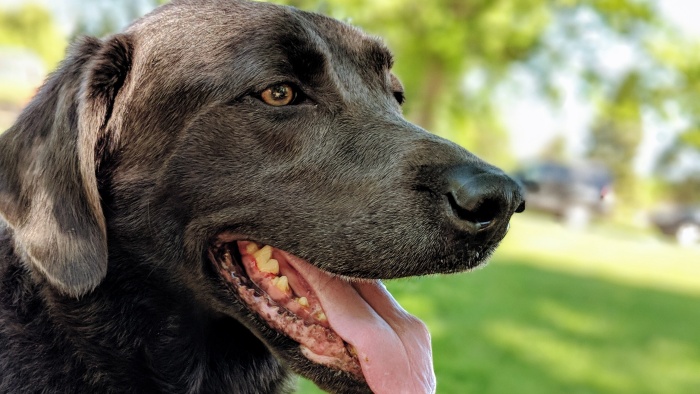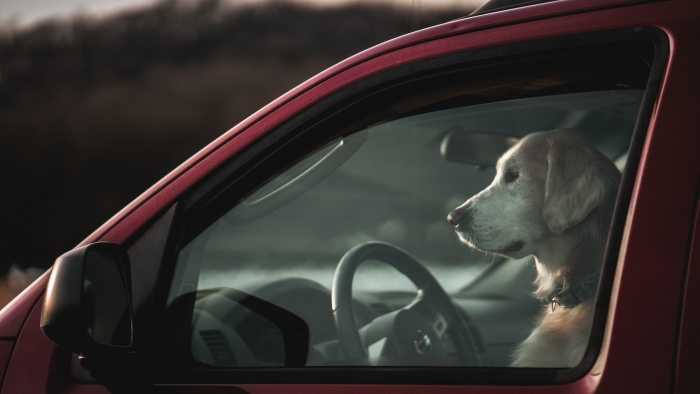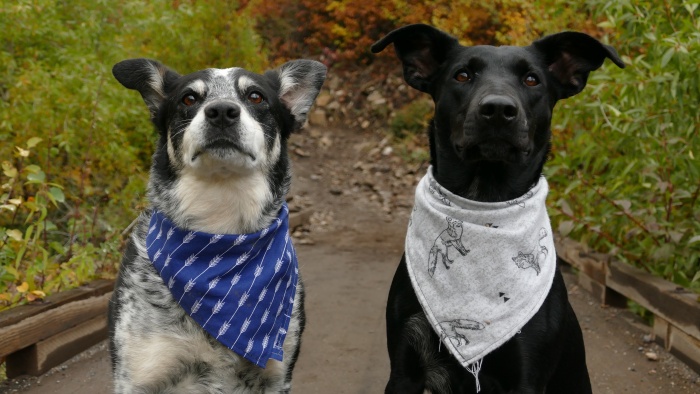Why Dogs Pant:Reasons And Solutions

Why dogs pant may be attributed to one of these five reasons:
Heat & heatstroke
Panting is a natural canine behavior, common in both happy and active dogs. Dogs differ from humans in their inability to sweat, hence panting is their primary method of regulating body temperature.
Through panting, dogs rapidly inhale, moisten, and exhale air, which facilitates the evaporation of moisture from their nose and lungs, effectively cooling their internal temperature. It’s crucial to provide abundant fresh water for your dog, especially on warm days, as panting can lead to significant water loss.
The vigor of normal panting should align with the surrounding temperature or your dog’s activity level.
Excessive panting due to overheating or heatstroke can be dangerous, leading to dehydration or worse. Such cases require immediate veterinary care.

Dogs suffering from heatstroke exhibit intense panting and signs of distress, such as restlessness or unresponsiveness, as they focus on cooling down.
Prevent heatstroke by taking regular breaks, seeking shade, and offering ample water during hot days or strenuous activities. Extra caution is advised for dogs with shorter snouts.
Excitement
Panting can also be a reaction to excitement in dogs. Such panting is typically quick and shallow and may be accompanied by whining, particularly during thrilling experiences like meeting new people or receiving treats.
Stress
Similar to excitement, dogs often pant and whine when stressed. Their body language, including wide eyes or yawning, can indicate stress. In such situations, assess and address the cause to alleviate your dog’s distress.
Pain
Panting in dogs can also indicate discomfort, nausea, or pain. A thorough examination by a veterinarian is necessary to determine if pain is the cause of your dog’s panting, and diagnostic tests may be recommended.
Medicine
Certain medications, like prednisone and other steroids, can cause increased panting in dogs, independent of heat, excitement, or stress. This side effect necessitates veterinary consultation if your dog’s panting becomes excessive.

Important Reminder: NEVER leave your dog in a hot car. The temperature inside a car can quickly become lethal, posing a severe risk to your dog’s life within just 10-15 minutes, even on moderately warm days. Always run the air conditioner or leave your dog at home when running errands.
Age factors
As dogs age, they may exhibit more frequent panting. This increased panting in older dogs can be attributed to their diminishing physical capabilities, or due to the aging of their cardiac and respiratory systems.
Aging can affect a dog’s ability to regulate body temperature as efficiently as they once could, leading to more frequent panting even in situations that wouldn’t have caused them to pant when they were younger.
Additionally, older dogs might have underlying health issues related to their heart or lungs, which can manifest as increased panting.
Regular veterinary check-ups are important to monitor the health of aging dogs and address any concerns related to their increased panting.
Solutions for dog panting
To help manage and alleviate the reasons for dog panting, consider the following solutions:
- Using a Dog Harness: For dogs that pant due to excitement or stress during walks, a well-fitted dog harness can provide more control and comfort than a traditional collar. This can reduce stress and excitement, thereby minimizing panting. A harness distributes pressure more evenly around the dog’s body, which is especially beneficial for dogs with respiratory issues or those prone to overheating.
- Ensuring Proper Hydration: Always ensure your dog has access to fresh water, especially on hot days or after exercise. This helps to prevent dehydration and overheating, which are common causes of panting.
- Regular Veterinary Check-ups: Frequent veterinary visits are crucial, especially for older dogs and those on medications like steroids. This helps in early detection and management of any health issues that could be causing increased panting.
- Creating a Calm Environment: For dogs that pant due to stress, creating a calm and stable environment can help. This includes providing a safe space for your dog and using techniques like positive reinforcement to reduce anxiety.
- Adjusting Exercise Routines: Adjust your dog’s exercise routine according to their age, health, and the weather. Avoid strenuous activities during the hottest parts of the day and opt for cooler times like early morning or evening.
- Using a Dog Bandana: Consider using a dog bandana that can be soaked in water and worn around the neck to help keep your dog cool. This can be particularly useful during hot weather to prevent overheating, one of the common reasons for panting.

Conclusion
Understanding why dogs pant is crucial for every pet owner. Panting is a multifaceted behavior that can be attributed to various factors including heat and heatstroke, excitement, stress, pain, the side effects of certain medications, and age-related changes.
Recognizing the underlying reasons behind this behavior allows for better care and more effective responses to ensure the well-being of our canine companions.
By implementing practical solutions such as using a dog harness, ensuring proper hydration, scheduling regular veterinary check-ups, creating a calm environment, adjusting exercise routines, and using cooling aids like a dog bandana, we can effectively address the different causes of panting.
This comprehensive approach not only helps in mitigating the immediate effects of panting but also contributes to the overall health and happiness of dogs. Remember, understanding why dogs pant is the first step towards providing them with a comfortable and healthy life.
FAQs
What are the signs of abnormal panting in dogs?
Abnormal panting differs from normal panting in its intensity, duration, and context. If your dog is panting excessively without a clear reason (like heat or exercise), or if the panting sounds harsher, more labored, or is accompanied by other symptoms like lethargy, coughing, or an irregular heartbeat, it could indicate a health issue.
Can certain breeds pant more than others?
Yes, some dog breeds, especially those with brachycephalic (short-nosed) features like Bulldogs and Pugs, are more prone to panting. This is due to their unique facial structure, which can impede their breathing and cause them to pant more often, especially in hot weather or during physical exertion.
How does obesity affect panting in dogs?
Overweight or obese dogs may pant more due to the extra effort required to carry excess weight. This additional strain can lead to overheating and respiratory challenges, making them pant more frequently. Maintaining a healthy weight through proper diet and exercise is crucial.
Are there specific environmental factors that can increase panting?
Yes, environmental factors like high humidity and poor ventilation can exacerbate panting. These conditions make it harder for dogs to regulate their body temperature through panting, leading to more effort and increased panting. Ensuring a well-ventilated and cool environment can help reduce this.
Is panting ever a sign of happiness in dogs?
Absolutely! Dogs often pant when they’re happy or excited, such as during playtime or when greeting their owners. This type of panting is usually easy to distinguish from stress or discomfort-related panting by the dog’s body language and the situation’s context.

